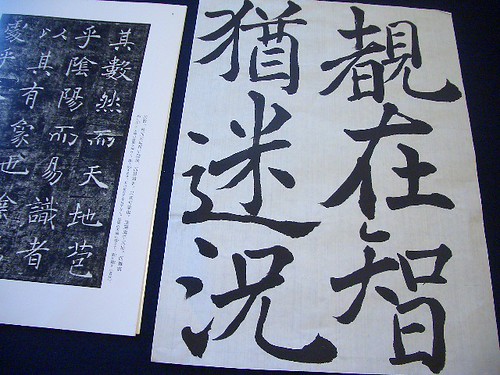The ancient art of Japanese calligraphy is captured today in numerous pieces of artwork. Some are used as home or office decor; others are becoming popular gift items. Others are even used as tattoo images.
"Shodo," a Japanese term for calligraphy that means the way of writing is taught to children at very young ages in schools. Adults practice it as a hobby. Getting started on learning the art of Japanese calligraphy may require you to complete a set consisting of six elements. One is a black, soft mat that provides a comfortable, soft surface where you will sit. It is called a Shitajiki. The next is a Bunchin, a metal stick used as weight for the paper during writing. Another is the Hanshi, or a special, thin calligraphy paper. Of course, you will need a brush or what they call the Fude.
 There are two kinds of Fude. There is the large brush to write main characters with and a smaller one to write the artist's name; although sometimes artists use the smaller ones to draw the characters, too. The next element is the Suzuri, a heavy black crucible holding the ink. The last one is the Sumi or a solid black material that when rubbed in water produces the black ink used for writing. This is for the more traditional calligraphers. For the rest, commercially available ink will serve the same purpose.
There are two kinds of Fude. There is the large brush to write main characters with and a smaller one to write the artist's name; although sometimes artists use the smaller ones to draw the characters, too. The next element is the Suzuri, a heavy black crucible holding the ink. The last one is the Sumi or a solid black material that when rubbed in water produces the black ink used for writing. This is for the more traditional calligraphers. For the rest, commercially available ink will serve the same purpose.


Japanese characters are drawn using one of the three styles: the square style called Kaisho; the semi-cursive Gyosho; and the cursive Sosho. The last two styles are faster to execute than the more traditional Kaisho.
Writing calligraphy is art in itself, and there are many collectors who host exhibits and auctions of Japanese calligraphy art prints. Most feature classic words of wisdom. They are usually framed in wood.
No comments:
Post a Comment